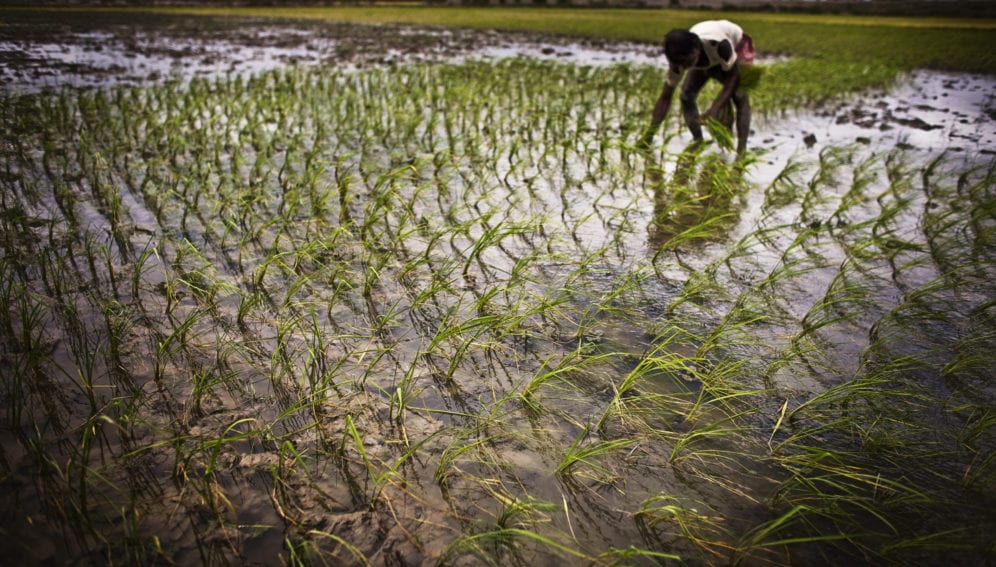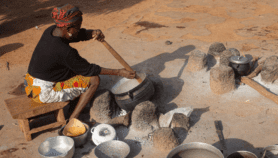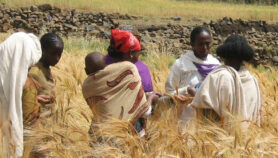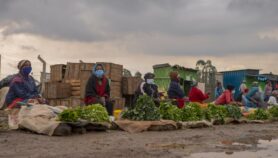By: Ranjit Devraj
Send to a friend
The details you provide on this page will not be used to send unsolicited email, and will not be sold to a 3rd party. See privacy policy.
[NEW DELHI] Shifting away from white, polished rice to a diet that includes more wheat and coarse grains can improve how Indians deal with micronutrient deficiencies, and reduce greenhouse gas (GhG) emissions associated with paddy cultivation, says a new study.
Published in the March edition of the journal Global Environmental Change, the study’s findings are described by Narasimha Rao, the paper’s author and project leader of ‘Decent Energy Living’ at the International Institute for Applied Systems Analysis in Vienna, as the result of a “hypothetical (ideal case) scenario analysis”.
India grows a variety of coarse grains — including sorghum, pearl millet, maize, barley, and finger millet — as well as many ‘small millets’ such as kodo millet, little millet, foxtail millet, proso millet, and barnyard millet.
However, the land devoted to cultivating millets has been steadily shrinking. According to a 2014 agricultural ministry status paper, the area under coarse grains shrank from 44.35 million hectares to 26.42 million hectares between the years 1966 and 2012.
The paper blamed India’s ‘green revolution’ in the mid-1960s, which focused on cultivation of wheat and rice to meet food security demands, for the decline of the area of coarse cereals. While wheat and rice received research, extension and market support, on the supply side there was a marked shift away from coarse grains, which it says had negative consequences for dietary micronutrients.
Relying on India’s National Sample Survey of Consumption Expenditure (2011‒12), Rao and his colleagues determined that around 500 million people, or more than two-thirds of the Indian population, are now affected by deficiencies in protein and micronutrients such as iron, zinc, and vitamin A.
“We compared nutritional information for different food types including rice, cereals, meat, and dairy products and looked at costs to households and levels of GhG emissions in various scenarios, including those with subsidies,” says Rao.
The worst of these life-threatening deficiencies is iron (90 per cent), followed by Vitamin A (85 per cent) and protein (50 per cent).
The study also shows that micronutrient deficiency to be worse in India’s urban areas than in the rural hinterland.
“We have very detailed results in our study for optimal diets by region, but the main outcome for all regions is the need to shift away from rice”
Narasimha Rao
Devinder Sharma, a leading agro-economist, agrees. Sharma is chair of the Forum for Biotechnology and Food Security, a New Delhi-based collective of agriculture scientists, economists, biotechnologists, farmers and environmentalists. “The result of policies that orphaned coarse grains, while favouring fine grains and cash crops such as soybeans and cotton, is now painfully evident as widespread micronutrient deficiencies,” he says.
Rao tells SciDev.Net that nutrient deficiencies were found less in the wheat-eating northern and western areas of the country than in the south and east, where rice is the staple food. “We have very detailed results in our study for optimal diets by region, but the main outcome for all regions is the need to shift away from rice,” he says.
According to Rao, nutrient deficiency can be overcome within existing household budgets by diversifying diets to include coarse cereals, pulses, and leafy vegetables, and by reducing rice intake.
Additionally, if the suggested dietary changes are made, India’s agricultural GhG emissions could be reduced by up to 25 per cent, according to the study. Rice paddies are a human-made source of methane, a GhG, but one that can be controlled.
Methane is produced by bacteria that digest straw ploughed back into fields in paddy fields to enrich it. Carbon dioxide is released when farmers resort to burning as a cheap way to get rid of agricultural residues.
However, current agricultural and food pricing policies may act as an impediment to dietary shifts, Rao says.
Under the 2013 National Food Security Act, two-thirds of India’s population became eligible to receive five kilogrammes of grains at subsidised prices. These subsidies favour rice over wheat and wheat over coarse grains, despite the lower nutritional content of the former.“It may not be immediately possible to generate a viable support price for coarse grains,” Rao surmises. And he notes other difficulties in shifting to coarse grains. “There are a number of barriers, on the supply side — getting farmers to agree to scale up the production of coarse grains and convincing consumers to eat these grains.”
According to Sharma, what is happening on the supply side is matched by a demand, in urban areas, for processed rice and wheat products. This is because they have shorter cooking times than coarse grains, he explains, and therefore are suited to the typical lifestyle of working couples.
“Nothing short of a complete overhaul of the agricultural system in the country is required,” says Sharma.
“Coarse grains are now gaining recognition as nutrient-rich and having desirable attributes such as drought-tolerance resilience to climate change, improving soil conditions and releasing less GhGs like methane, especially when compared to rice paddies,” he adds.
This piece was produced by SciDev.Net’s Asia & Pacific desk.














